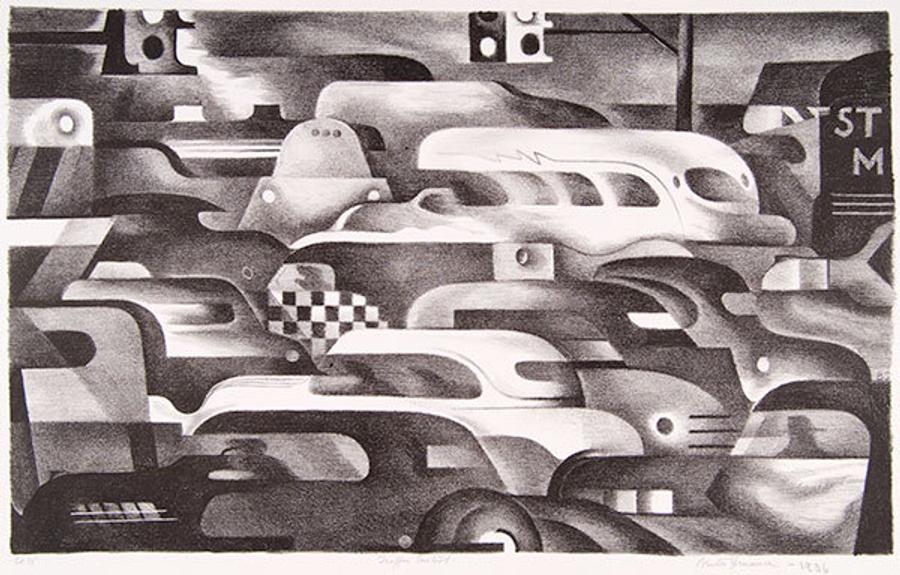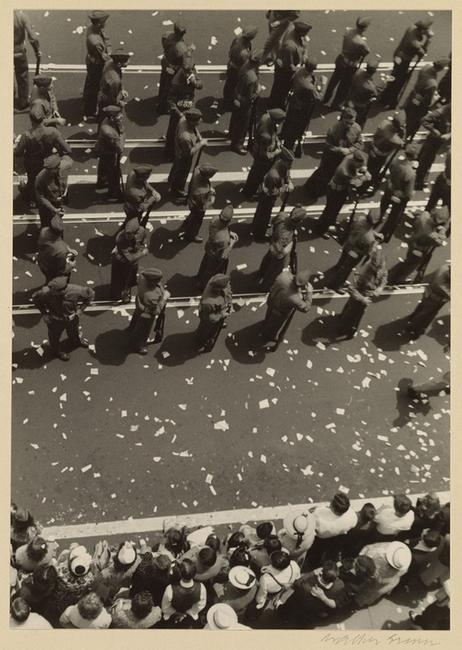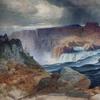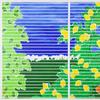A World of Strangers: Crowds in American Art on view at Huntington Art Gallery
- SAN MARINO, California
- /
- December 15, 2015

A focused loan exhibition at The Huntington Library, Art Collections, and Botanical Gardens explores the various ways in which American artists have represented crowds in modern urban life. “A World of Strangers: Crowds in American Art” is on view now to April 4, 2016, in the Huntington Art Gallery, San MArino, California.
The exhibition of about 20 works shows how artists have represented groups of people as patterns of dots, murky silhouettes, and teeming, river like currents of cars and machinery, as well as voyeurs of horrific scenes. It includes art from the 20th century to contemporary times by artists such as George Bellows, Walker Evans, Torkel Korling, George Luks, and Weegee working in various media. In addition to objects from The Huntington’s collections, the exhibition features selections from lenders including the J. Paul Getty Museum, the Los Angeles County Museum of Art, and Pasadena-based collector and longtime Huntington benefactor Hannah S. Kully.

“A World of Strangers” begins with an evocative photograph, Crowded Pier by Moonlight, Arverne, Long Island, New York, made around 1910. The picture, by Karl Struss, a photographer who later became a successful cinematographer, depicts people on a pier at night who seem to meld with the moon’s afterglow. The exhibition ends with three pieces from Ken Gonzales-Day’s chilling Erased Lynching, a photographic series from 2006 that casts a stark light on communities gathered to witness lynchings, and in one case what appears to be a military execution. The works by Struss and Gonzales-Day, separated by nearly a century, demonstrate two of the various ways in which artists convey the anonymity of crowds, in one case romantic and sublime, and in the other horrific.
Gonzales-Day’s East First Street (Lightjet mounted to cardstock) originated from a historical photograph, but was altered in 2006, with the victim digitally “erased.” The resulting work sharpens the focus on the community that gathered to watch the spectacle. Among those in the crowd is a central figure that, perhaps self-consciously, is caught looking back at the camera as the photograph is taken. “In a crowd, people are sometimes compelled to act in ways they would not do otherwise,” said James Glisson, Bradford and Christine Mishler Assistant Curator of American Art at The Huntington and curator of the exhibition. For example, in Weegee’s First Murder (ca. 1950), the documentary-style photograph captures a gang of curious children and adults joined together to stare at a gruesome crime scene.
“We all carry around in the back of our minds an idea of how we relate to everyone else. These artists give form to the constant and mostly unconscious negotiating we do with all those strangers every time we’re in public, on the metro, at the airport, on the freeway,” said Glisson.
In “A World of Strangers,” some crowds are so anonymous that they become abstract textures rather than individuals, as in Korling’s 1929 photograph Crowded Beach, taken from above, and in Benton Murdoch Spruance’s 1939 lithograph Traffic Control, in which cars on a street become a puzzle of interlocking graphic shapes. Said Glisson, “From a busy swarm of cars to a scattered pattern of people on a beach, each seeking out a private patch of sand, these works speak volumes about the modern world and our place in it.”














_(17100x100_c.jpg)

